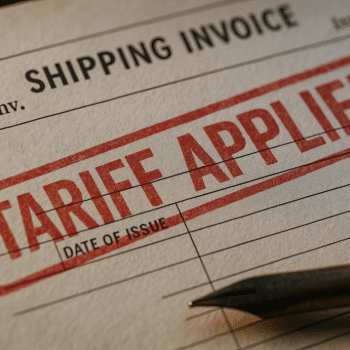
Tariff Confusion Might Be Costing You More Than It Should
Posted on November 6, 2025
The jury is still out on the impact of the tariffs on the economy, but if the tariff bills are dragging down your bottom line, you might be overpaying. Thanks to the confusion surrounding the constantly changing tariff rates, no one is quite sure where each product category stands, and end up misclassifying some imports at much higher rates.
Let’s look at why this is happening and what you can do to avoid such extra charges.
Why is there confusion regarding tariffs?
The media circus notwithstanding, any tariff rates set by the government are communicated officially to the customs. So why is there even any confusion around them?
The sticking point is classification. The tariffs vary based on the country of origin, as well as the type of product in question. For PC parts specifically, there are a number of exceptions in many categories that brokers often fail to account for.
Then there are issues with the invoicing itself. If your vendors don’t clearly mention the applicable tariff code and designate the country of origin for each component shipped, customs will just default to the highest possible rate, dealing a big blow to your finances.
How to avoid these mistakes
Account for the tariffs
First and foremost, integrate the tariffs into your price quotes. You do not want to set your budget at the cost price and then end up paying the tariff difference from your margin. The quotes you give must factor in any tariffs you will incur when sourcing the components.
Of course, this means you must determine exactly what your tariff liability would work out to. Since the tariffs are decided by country, the key metrics for this are the product category and the origin country. A lot of suppliers would use strategies that involve assembling the product in a low-tariff nation to reduce the liability, and this is a legal method to save costs.
For components that must be imported as it is, you need to add up the individual tariffs to understand the complete tariff overhead for the final product, and bill accordingly.
Proper invoicing
Second, source from vendors with accurate invoicing. A lot of the tariff confusion can be avoided by simply having complete documentation. The commercial invoices must be thorough, listing the country of origin for every individual component being imported to prevent them from being slapped into the wrong category.
This also involves using the correct tariff codes. Many hastily made invoices lack this crucial information, at which point customs treats it as uncategorized and charges you accordingly. Meeting the tariff requirements calls for a properly vetted supply chain, with every stage keeping track of the flow of the products involved. Only then can your final commercial invoice correctly reflect the origin country of the components being imported and avoid customs issues.
Dedicated brokers
And finally, relying on customs brokers who actually know how to manage computing products. General courier services are not equipped with the knowledge to correctly classify the tariffs on these products, many of which are exempted entirely from tariffs. A savvy broker stays updated on the policy changes and ensures you are paying as little as possible.
This may sound like a simple step, but many businesses end up using courier services that will lump all electronics into one category, incurring massive tariffs that could have been avoided entirely for most computing components.
Of course, this isn’t something you need to worry about if you are sourcing from an embedded systems provider that already handles the logistics. This saves you from the hassle of ensuring the correct tariff compliance, as a trusted provider will take care of the process. This includes the invoicing, the categorization, and verification of the charges involved to minimize the tariff liability.
Will the tariff situation get any better?
A lot of the current confusion around tariffs stems from the lack of familiarity. The tariffs went into effect on rather short notice, and supply chains aren’t used to managing this aspect yet.
The policy is also malleable at this stage, and rates keep changing while the trade negotiations continue. As time goes on, we can expect the tariff rates to stabilize, and for suppliers to figure out the documentary needs correctly.
